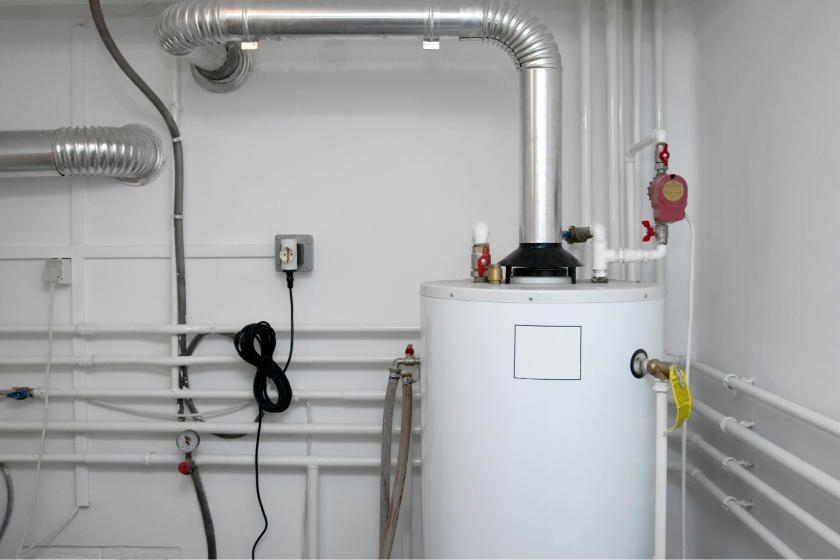Professional Tips for Maintaining Your Home's Hot Water System
Professional Tips for Maintaining Your Home's Hot Water System
Blog Article
What are your thoughts concerning Tips For Maintaining Your Hot Water Heater?

Warm water is essential for daily comfort, whether it's for a refreshing shower or washing meals. To guarantee your hot water system runs efficiently and lasts longer, regular maintenance is crucial. This post gives sensible pointers and insights on how to keep your home's hot water system to avoid disruptions and costly repair work.
Introduction
Keeping your home's warm water system could seem daunting, but with a few easy steps, you can ensure it operates smoothly for years to find. This guide covers every little thing from recognizing your hot water system to do it yourself upkeep ideas and understanding when to hire specialist aid.
Value of Keeping Your Warm Water System
Routine maintenance not just prolongs the lifespan of your warm water system however also ensures it operates successfully. Ignoring upkeep can result in lowered efficiency, greater energy bills, and even early failure of the system.
Indications Your Hot Water System Demands Maintenance
Knowing when your warm water system needs interest can prevent significant issues. Keep an eye out for indications such as inconsistent water temperature level, unusual sounds from the heating unit, or rusty water.
Comprehending Your Hot Water System
Prior to diving into upkeep tasks, it's handy to understand the fundamental components of your warm water system. Generally, this consists of the water heater itself, pipelines, anode rods, and temperature level controls.
Monthly Upkeep Tasks
Regular regular monthly checks can help catch minor concerns before they rise.
Flushing the Hot Water Heater
Flushing your hot water heater gets rid of sediment build-up, improving effectiveness and prolonging its life.
Checking and Changing Anode Rods
Anode rods stop deterioration inside the container. Inspecting and replacing them when worn is vital.
Evaluating and Readjusting Temperature Settings
Adjusting the temperature settings makes sure ideal efficiency and safety and security.
Do It Yourself Tips for Upkeep
You can perform several maintenance tasks yourself to keep your warm water system in leading condition.
Checking for Leaks
Routinely inspect pipes and connections for leaks, as these can lead to water damage and higher bills.
Testing Pressure Alleviation Valves
Examining the stress safety valve guarantees it operates appropriately and stops excessive pressure accumulation.
Shielding Pipelines
Insulating hot water pipes decreases warm loss and can conserve power.
When to Call a Specialist
While do it yourself maintenance is advantageous, some problems need expert experience.
Complex Issues Requiring Professional Help
Examples include major leakages, electric troubles, or if your hot water heater is consistently underperforming.
Routine Professional Maintenance Benefits
Professional maintenance can consist of complete evaluations, tune-ups, and making certain compliance with safety criteria.
Final thought
Regular upkeep of your home's hot water system is important for performance, longevity, and price financial savings. By complying with these suggestions and recognizing when to seek expert help, you can make certain a dependable supply of warm water without unexpected interruptions.
How to Maintain an Instant Hot Water Heater
Before tinkering with your hot water heater, make sure that it’s not powered on. You also have to turn off the main circuit breaker and shut off the main gas line to prevent accidents. Also turn off the water valves connected to your unit to prevent water from flowing into and out of the appliance. 2. When you’re done, you have to detach the purge valves’ caps. These look like the letter “T†and are situated on either side of the water valves. Doing so will release any pressure that has accumulated inside the valves while at the same time avoid hot water from shooting out and burning your skin. 3. When the purge valves’ caps are removed, you have to connect your hosing lines to the valves. Your unit should have come with three hoses but if it didn’t, you can purchase these things from any hardware or home repair shops. You can also get them from retail stores that sell water heating systems. Read the user’s manual and follow it to complete this task properly. When the hosing lines are connected, open the purge port’s valves. 4. You should never use harsh chemical cleaners or solutions when cleaning your unit. Make use of white vinegar instead. It should be undiluted and you’ll probably use about 2 gallons. 5. Now flush your water heater. This task should probably take about 40 minutes. We can’t give you specific directions for this because the procedure is carried out depending on the type, model and brand of your heater. With that being said, refer to the user’s manual. 6. When you’re done draining the unit, you have to turn off the purge port valves again. Remove the hosing lines that you earlier installed on each of the water valves. Put the valve caps (purge port) back in their respective places and be very careful so as not to damage the rubber discs that are found inside these caps. 7. Now that everything’s back in place, check your user’s manual again to find out how to reactivate your water heating system. 8. Once it is working, turn one of your hot water faucets on just to let air pass through the heater’s water supply pipes. Leave the tap on until water flows smoothly out of it. https://www.orrplumbing.com/blog/2014/september/how-to-maintain-an-instant-hot-water-heater/

I recently found that blog entry on Water Heater Maintenance Tips You Can't Afford to Forget while doing a lookup on the internet. Sharing is caring. Helping people is fun. We treasure reading our article about How to Maintain a Hot Water Heater in a Few Simple Steps.
Click Here Report this page